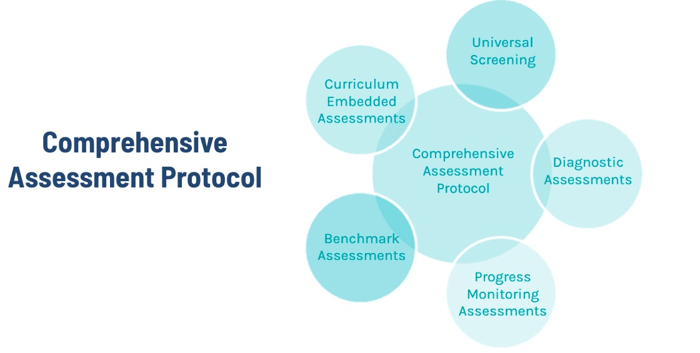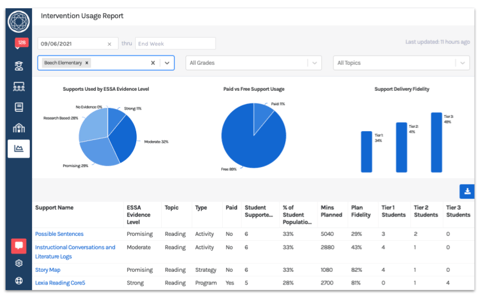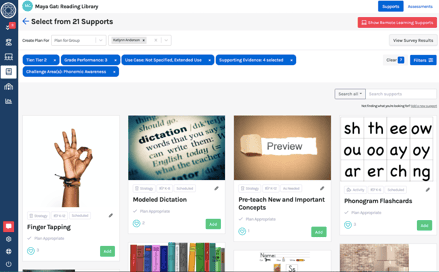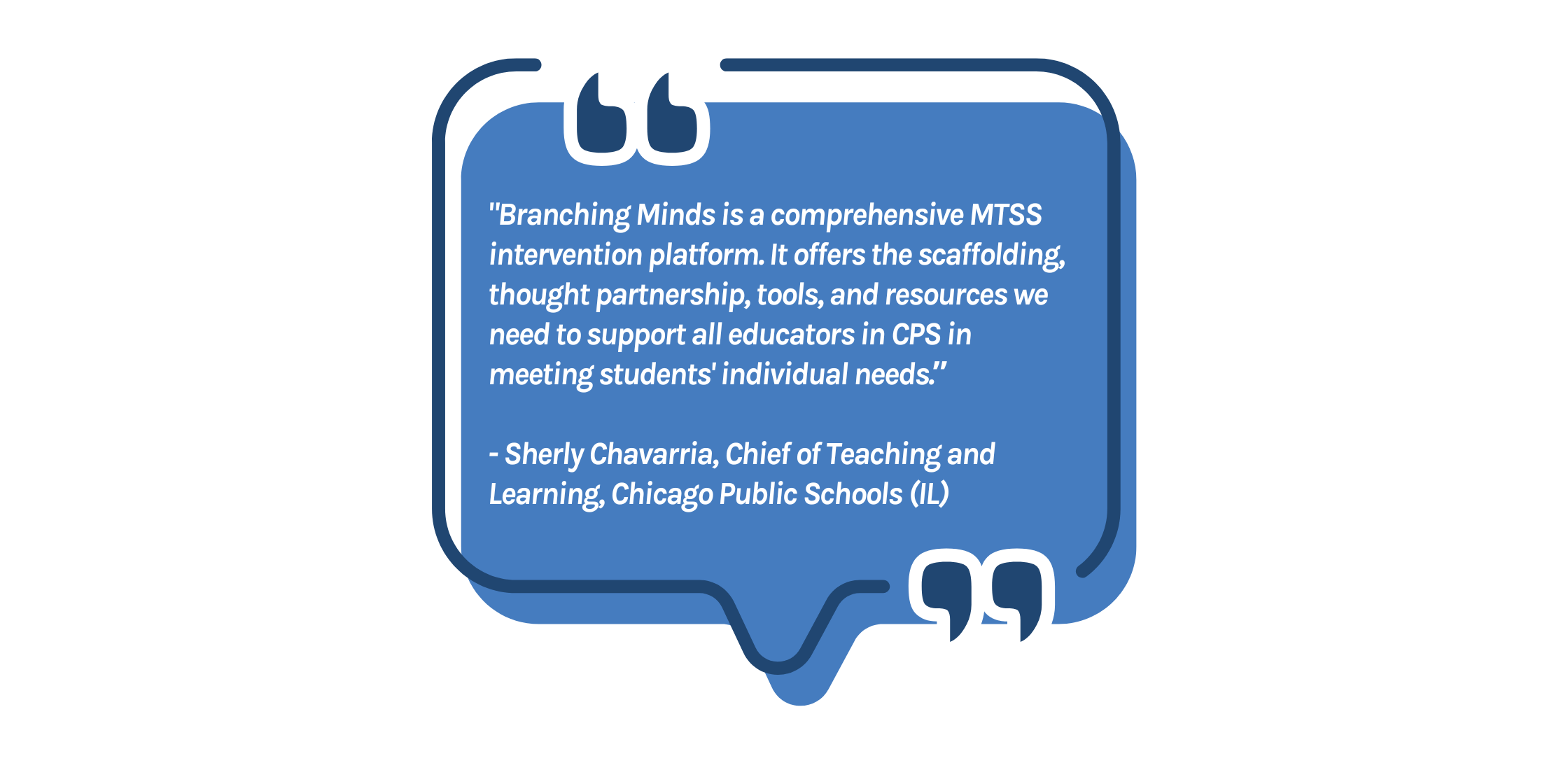Another new school year is back in swing, and along with that come new students, new school supplies, and new challenges. Along with grading, lesson plans, and lunch count comes that period of the day in which teachers are tasked with choosing appropriate, evidence-based interventions to support struggling students. This responsibility can be overwhelming for teachers who are already juggling so many tasks during the school day.
Whether working with teachers or administrators, I get asked, “How do I choose the right intervention for my students?” It would be great if I was the fairy godmother of interventions and could wave my magic intervention wand, but even though I don’t have one of those, I have done a bit of research and want to share some guidelines and tips for wading through the swamp of intervention resources! Knowing what to look for—and where to find it—is half the battle in getting the resources you need to support your students.
The Process of Selecting an Intervention Can Be Broken Down Into Four Steps:
- Identify the issue of concern, collect baseline data, and develop goals
- Search the Internet, books, and primary resources for interventions
- Consider the benefits and disadvantages of intervention options
- Select an appropriate evidence-based intervention (source)
#1: Identify the Issue of Concern, Collect Baseline Data, and Develop Goals
I have heard many times over the years from teachers, “I have a gut feeling that...” While it is possible that “gut feeling” might serve you well, the only accurate way to identify an area of concern for a student or group of students is through data collection. Having a comprehensive assessment protocol in place is crucial to have the data you need to move on to searching for an appropriate intervention.
For a more in-depth look at utilizing data checks and description of each of the assessments in a Comprehensive Assessment Protocol check out this article.

#2: Search the Internet, Books, and Primary Resources for Interventions
Does this sound daunting to you? Are you wondering where I find these proven programs? Let’s start by getting an overview of reliable tools and charts that can help you quickly identify appropriate interventions.
National Center on Intensive Intervention (NCII) Tools Charts
You may be currently utilizing an intervention tool and not seeing positive results. If that is the case, you can use the Tools Chart for Interventions and identify whether your intervention tool is on the chart. Are you meeting the criteria of its use to achieve the best outcome, i.e., frequency, dosage, attention to transfer, etc.?
The NCII Interventions Tools Chart includes reviews and descriptions of commercial intervention programs in mathematics, reading, and writing.
What Works Clearinghouse (WWC)
The What Works Clearinghouse is an investment of the Institute of Education Sciences (IES) within the U.S. Department of Education that was established in 2002. The WWC provides reviews and descriptions of intervention programs and strategies in mathematics, reading, writing, and behavior.
Evidence for ESSA
This website was created to help identify programs. It provides a free, authoritative, user-centered database to help educators easily find programs and practices that align to the ESSA evidence standards and meet their local, district, school, or classroom needs while meeting the new ESSA evidence standards.
Branching Minds Support Library
Branching Minds has the most comprehensive and instructive library of evidence-based learning supports of any MTSS platform. The Branching Minds learning science team has curated these resources from the most trusted and respected hubs of evidence-based supports, including the Florida Center for Reading Research, What Works Clearinghouse, Evidence for ESSA, Intervention Central, the IRIS Center from Vanderbilt University, and Harmony SEL; and, each one has been reviewed and categorized based on the ESSA tiers of evidence guidelines.
#3 and #4: Consider Your Options and Select an Intervention
Now that you know where to look, take some time to consider your options and select evidence-based interventions for your students. Selecting an appropriate intervention is an important first step to helping achieve student learning goals.
For students to reach these goals, teachers must use the program as intended, with fidelity. Having a platform like Branching Minds allows teachers and managers to track the implementation of student interventions in a group or individually.
![]()
The Branching Minds Intervention Usage Report shows:
- An overview of all of the supports that have been added to a student’s learning plan
- Whether the interventions are evidence-based, and
- Fidelity of implementation

So, whether you have all the resources of Branching Minds at your fingertips, or are out on your own, you CAN find the support needed for your students. Now it’s time to go out and use all the resources at your disposal to start implementing interventions for your kiddos!
👉 Check out The MTSS Intervention Toolkit for the 2022-2023 School Year 👈

About the author
Sandra Spruell
Sandra Spruell is an experienced educator and educational consultant with a strong background in curriculum development, instructional leadership, and intervention strategies. As an Educational Consultant at Branching Minds, Sandra has held various leadership roles. With over three decades in public education, she has taught multiple grade levels and contributed to districtwide initiatives in curriculum design, teacher mentorship, and professional development. Holding a master’s in educational leadership and multiple certifications, Sandra is dedicated to improving student outcomes and supporting educators.

Your MTSS Transformation Starts Here
Enhance your MTSS process. Book a Branching Minds demo today.





















.png?width=716&height=522&name=Tech-Learning-Most-Influential-Edtech-Product-2025(preview).png)
